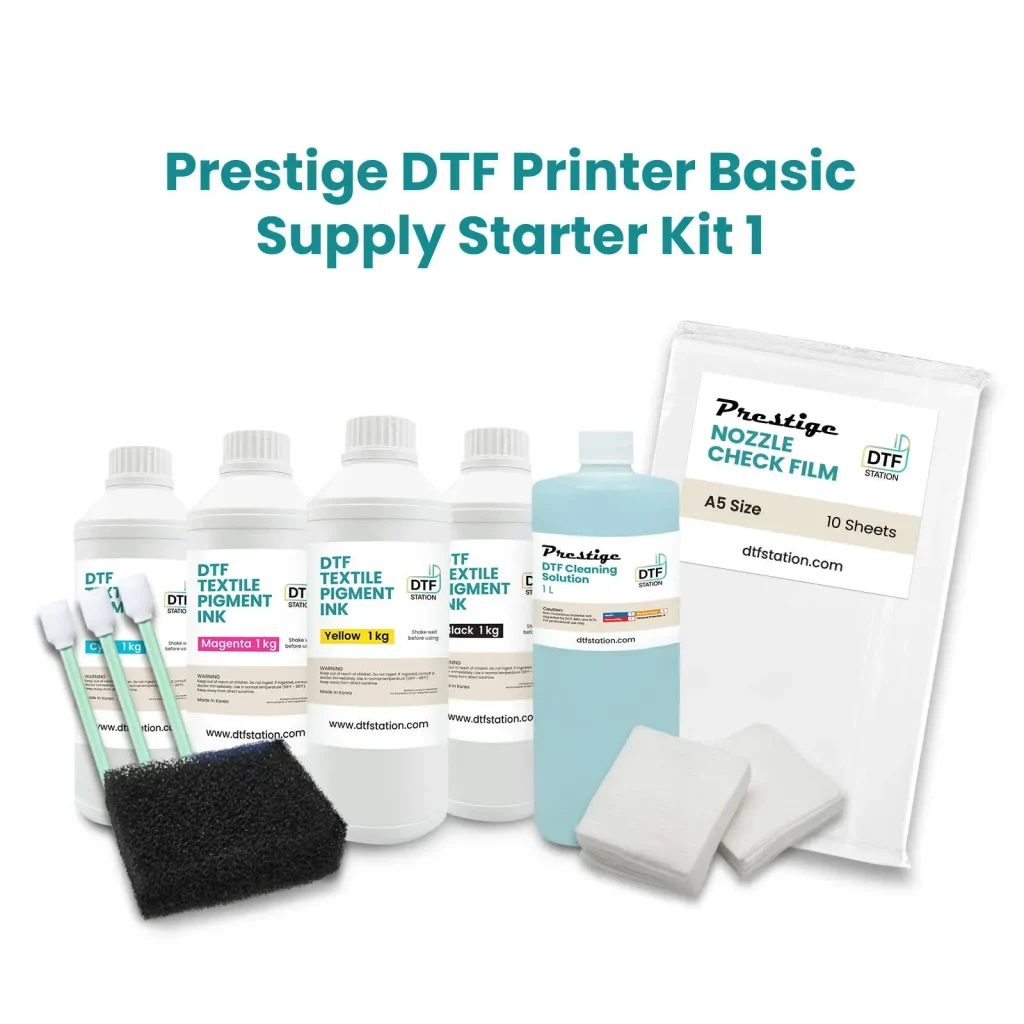DTF Supplies are essential for anyone venturing into the world of Direct to Film printing, a technique renowned for producing vibrant and durable prints on a variety of fabrics. As the demand for custom apparel grows, understanding how to source the best DTF supplies can significantly influence your success. From selecting the right DTF films to ensuring you’re using the best DTF inks, each component plays a vital role in achieving high-quality transfers. However, newcomers often make mistakes while buying DTF supplies, like overlooking compatibility or focusing solely on price. In this guide, we will explore important DTF printing tips and highlight common pitfalls to avoid, ensuring you make informed, effective purchases from trustworthy suppliers of DTF products.
Navigating the realm of DTF printing requires a careful selection of various products that can optimize your workflow and enhance print quality. Known as Direct to Film printing, this innovative approach necessitates the use of specific films, inks, and machinery tailored for the technique. When acquiring these necessary materials, one must remain vigilant about factors such as compatibility and supplier reputation, as these can significantly impact the final results. Furthermore, proper research into costs and product specifications can help you find sustainable options that align with your printing goals. This discussion will guide you through the essentials of sourcing DTF materials while avoiding common mistakes that could lead to undesirable outcomes.
Common Pitfalls in Sourcing DTF Films
When sourcing DTF films, one common pitfall is failing to consider the specifications that will suit your printing needs. Each type of DTF film has unique properties, such as thickness, release characteristics, and compatibility with specific inks. In the printing world, opting for subpar films can lead to poor transfer quality and unsatisfactory prints, which ultimately deteriorates customer satisfaction. Thus, it is essential to conduct thorough research on the available options and choose films that not only meet your aesthetic goals but also conform to industry standards.
Additionally, many new DTF printers may overlook the importance of testing films before committing to larger orders. Always order samples to assess how well a specific film performs with your inks and printer settings. This can prevent costly mistakes and ensure that the final products meet your quality expectations. Remember, investing time in understanding the nuances of different DTF films can dramatically influence the outcome of your prints.
Evaluating the Best DTF Inks for Your Projects
Selecting the best DTF inks is a crucial step in ensuring the vibrancy and durability of your prints. Newcomers often make the mistake of prioritizing cost over quality, resulting in inks that lead to fading and poor adhesion. To avoid this pitfall, always examine the formulation of the inks and seek out reputable brands known for their performance. High-quality DTF inks can enhance print clarity and maintain color integrity, setting your work apart in a crowded marketplace.
Moreover, it’s beneficial to stay updated on the latest advancements in DTF ink technology, as manufacturers continuously improve their formulations to create inks with better adhesion and vibrancy. Engaging with user reviews and expert recommendations can serve as a guide in your selection process. By investing in top-notch inks, you ensure the long-term satisfaction of your customers and strengthen your brand’s reputation.
Choosing Reliable Suppliers of DTF Products
When navigating the DTF supplies landscape, choosing reliable suppliers is fundamental. Not all DTF product suppliers adhere to industry standards, and going for the lowest price can lead to receiving substandard materials. Therefore, take the time to conduct thorough research on potential suppliers. Check reviews on third-party sites, and seek recommendations from other DTF printers to uncover the most reliable sources. Remember, the supplier’s reputation oftentimes reflects the quality of the materials they offer, which directly impacts your end product.
Additionally, establishing a relationship with trustworthy suppliers can offer further benefits, such as access to expert advice and support. Suppliers that prioritize customer service can provide valuable insights that save you time and resources as you expand your printing capabilities. Don’t be afraid to ask questions; a good supplier will be happy to assist you and ensure you have the best possible materials for your operations.
Key DTF Printing Tips to Enhance Quality
To elevate the quality of your DTF printing process, there are several critical tips to keep in mind. First, ensure that you consistently maintain your printing equipment to prevent issues such as clogging nozzles or uneven ink distribution. Regular maintenance routines, such as cleaning and testing components, can enhance the overall quality of your prints and extend the life of your printer.
Another vital tip is to experiment with different temperature and pressure settings for your heat press, as these can significantly impact transfer quality. Taking the time to test and document the results can lead to perfected techniques that yield vibrant, long-lasting prints. Share findings with the broader DTF community as this collaborative spirit can lead to even better outcomes across the board.
Understanding the Importance of Material Specifications
Understanding material specifications is essential when choosing DTF supplies. Each material plays a critical role in the outcome of your prints, from the film you use to the inks selected. Using materials that do not meet your project requirements can lead to disappointing outcomes, such as poor washing durability or peeling prints. Always make sure to read product descriptions and material data sheets to completely understand what you’re buying.
Moreover, different projects may require different materials. For instance, if you are printing on diverse fabric types, you may need various inks or films designed for those specific substrates. Evaluating and adapting to these specific needs for each project can greatly enhance the quality and professionalism of your work.
Testing Supplies to Ensure Quality Before Bulk Orders
Before committing to a large order of DTF supplies, it is imperative to test the products with smaller quantities. Ordering samples not only allows you to evaluate the quality of films and inks but also helps to ensure that they are compatible with your specific printer settings. Testing methods can save you from costly mistakes that can arise from poor-quality materials, such as low transfer rates or faded colors.
Conducting test prints allows you to tweak your processes, adjust settings, and ultimately refine your approach before making a larger commitment. This practice empowers you to master the intricacies of the materials and gives you confidence in your purchasing decisions, minimizing the risk of future mishaps.
Frequently Asked Questions
What are the top tips for buying DTF supplies?
When buying DTF supplies, ensure compatibility between your printer and materials, conduct thorough research on suppliers, and consider testing samples before bulk purchases. Be mindful of quality over price to achieve the best results in your DTF printing projects.
How do I choose the best DTF inks for my projects?
To choose the best DTF inks, evaluate brands based on customer reviews, compatibility with your printer, and consistency in color output. Investing in reputable inks can significantly enhance the quality of your DTF prints and customer satisfaction.
What should I look for in DTF films when sourcing supplies?
When sourcing DTF films, check specifications for compatibility with your printer and inks, as well as the film’s durability and transfer quality. High-quality films will prevent issues such as peeling and fading in finished projects.
What common mistakes do people make when sourcing DTF products?
Common mistakes when sourcing DTF products include ignoring compatibility between supplies, focusing solely on cost, and failing to research reputable suppliers. It’s crucial to consider material specifications and support when making purchases.
How can I ensure compatibility among my DTF supplies?
To ensure compatibility among your DTF supplies, carefully review the specifications of each product, consult with suppliers for advice, and, if possible, conduct tests with smaller quantities to verify functionality with your printer.
Where can I find reliable suppliers of DTF products?
You can find reliable suppliers of DTF products by researching industry reviews, asking for recommendations from fellow printers, and checking supplier qualifications. It’s also beneficial to reach out to them for support and customer service inquiries.
| Mistake | Description |
|---|---|
| Ignoring Compatibility | Always ensure all components are compatible to avoid quality issues. |
| Focusing Solely on Price | Don’t sacrifice quality for a lower price to avoid poor results. |
| Neglecting Research on Suppliers | Research suppliers to avoid subpar products and poor customer service. |
| Overlooking Material Specifications | Select materials that meet the needs of your printing projects. |
| Misjudging Quantity Needs | Estimate your needs to avoid excess inventory and waste. |
| Forgetting to Test Supplies | Always test with smaller quantities before larger orders. |
| Not Considering Future Needs | Plan for scalability to accommodate future project expansions. |
| Neglecting Support and Resources | Look for suppliers with strong technical support and resources. |
| Overlooking Environmental Considerations | Choose eco-friendly options to appeal to sustainability-conscious customers. |
| Skipping Maintenance Plans | Ask about maintenance plans to prolong the life of your equipment. |
Summary
DTF Supplies are crucial to the success of your DTF printing projects. Understanding and avoiding common mistakes such as ignoring compatibility, solely focusing on price, and neglecting supplier research can significantly enhance your printing quality and efficiency. Careful consideration of future needs, testing of supplies, and selecting environmentally friendly options can also pave the way for sustainable business practices. With these insights, you’ll not only improve your print quality but also foster long-lasting relationships with your customers, ultimately driving growth for your printing endeavors.



